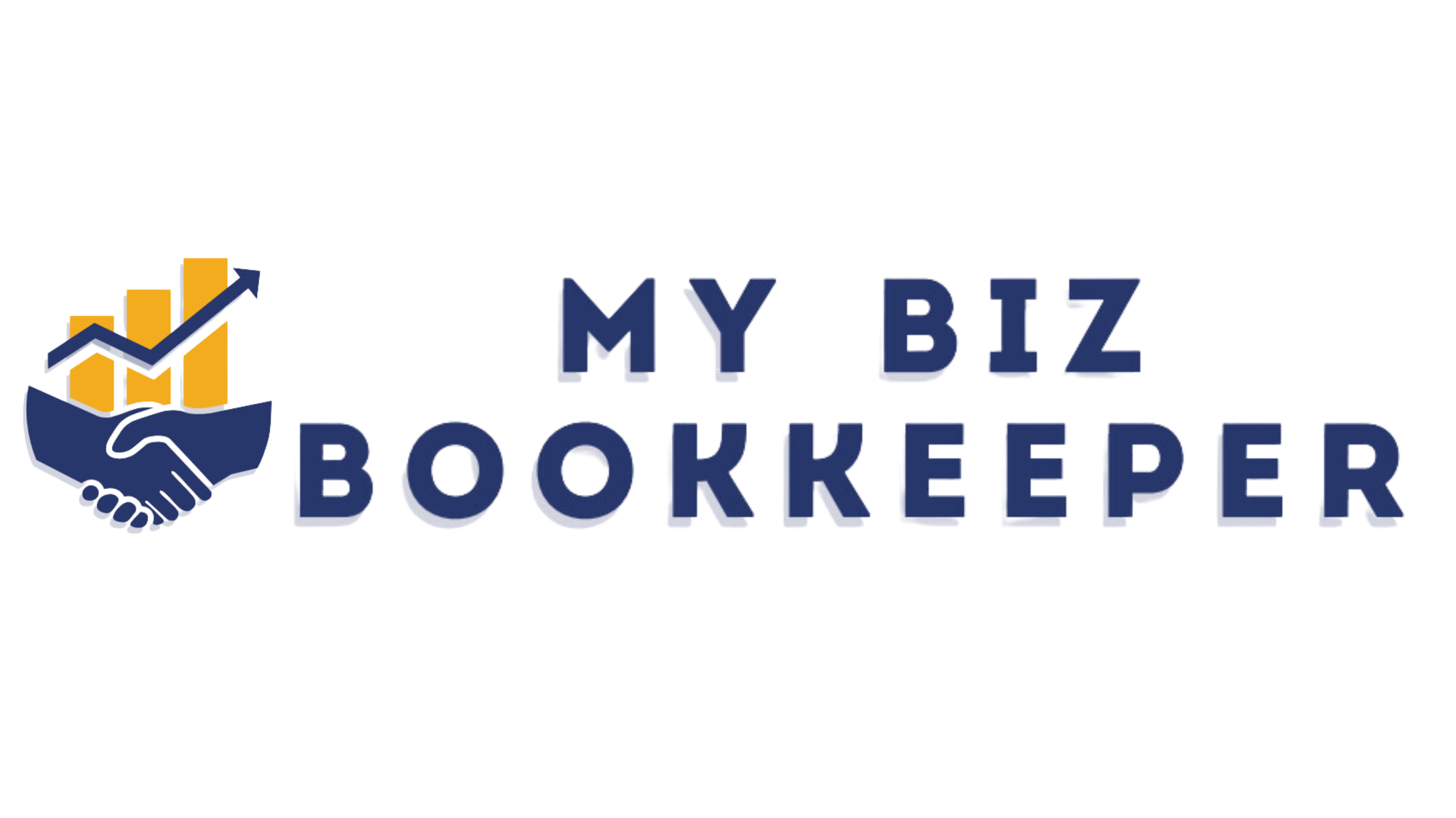Preparing for Business Loan Applications | Financial Documentation You Need

As businesses prepare for growth opportunities in Q2 and Q3, many will seek additional financing to fund expansion plans, inventory purchases, or equipment upgrades. Whether you're approaching a traditional bank, exploring SBA loans, or considering alternative lenders, proper documentation is crucial to securing approval and favorable terms. This guide will help business owners understand what financial documentation is required and how your bookkeeper can assist in preparing a successful loan application package.
Why Documentation Matters
Lenders need to assess risk before approving your loan. Strong, well-organized documentation:
- Demonstrates your business's financial health and stability
- Shows your ability to repay the loan
- Builds credibility with lenders
- Speeds up the application process
- May help secure better interest rates and terms
Poorly prepared or incomplete documentation is one of the primary reasons business loan applications get rejected. Taking time to organize your financial records properly is an investment that pays significant dividends.
Essential Financial Documentation
1. Business Financial Statements
Income Statement (Profit & Loss)
- Most lenders will require 2-3 years of income statements
- Shows your revenue, expenses, and profitability
- Demonstrates your business's earning potential
- Should be prepared according to GAAP (Generally Accepted Accounting Principles)
Balance Sheet
- Provides a snapshot of your business's assets, liabilities, and equity
- Shows your business's net worth at a specific point in time
- Helps lenders assess your debt-to-equity ratio and overall financial stability
- Should include detailed inventory valuations if applicable
Cash Flow Statement
- Documents how cash moves in and out of your business
- Shows your ability to generate and maintain positive cash flow
- Particularly important for demonstrating loan repayment capacity
- Should highlight recurring revenue streams and predictable expenses
2. Tax Returns and Supporting Documents
Business Tax Returns
- Most lenders require 2-3 years of business tax returns
- Include all schedules and attachments
- Should match your financial statements (any discrepancies must be explained)
- For pass-through entities (S-Corps, LLCs, partnerships), include Schedule K-1s
Personal Tax Returns
- Required for business owners with 20% or more ownership
- Usually needed for the past 2-3 years
- Important for assessing the owner's personal financial stability
- Particularly crucial for small businesses and startups
Sales Tax Returns
- Demonstrates compliance with state and local tax requirements
- Verifies reported revenue figures
- Shows business legitimacy and operational history
3. Bank Statements and Accounting Records
Business Bank Statements
- Typically required for the past 6-12 months
- Verifies cash flow and account balances
- Shows deposit consistency and spending patterns
- Should reconcile with your accounting records
Accounts Receivable Aging Reports
- Lists all outstanding customer invoices by age
- Helps lenders assess the quality of your receivables
- Shows your collection efficiency and customer payment patterns
- Important for businesses that extend credit to customers
Accounts Payable Aging Reports
- Details what your business owes to vendors and suppliers
- Shows your payment habits and vendor relationships
- Helps lenders assess your short-term liabilities
- Important for inventory-dependent businesses
4. Business Ownership and Legal Documents
Business Formation Documents
- Articles of incorporation, LLC operating agreement, partnership agreement, etc.
- Proves legal establishment and good standing
- Establishes ownership structure and percentages
- Demonstrates compliance with state requirements
Business Licenses and Permits
- Shows your business is legally authorized to operate
- Demonstrates regulatory compliance
- May include industry-specific licenses and certifications
- Helps establish business legitimacy
Franchise Agreements (if applicable)
- Required for franchisees seeking financing
- Shows terms, fees, and obligations to the franchisor
- Helps lenders understand your business model and restrictions
5. Collateral Documentation
Property Appraisals and Titles
- Required for loans secured by real estate or major equipment
- Establishes the value of collateral being offered
- Should be recent (typically within 6-12 months)
- May require professional third-party assessments
Equipment Inventories and Valuations
- Lists major business equipment with current market values
- Should include serial numbers, purchase dates, and condition
- May require professional appraisals for significant items
- Important for equipment-intensive businesses
Intellectual Property Documentation
- Patents, trademarks, copyrights, and other IP assets
- May serve as valuable collateral for certain businesses
- Should include registration certificates and valuation estimates
- Particularly important for technology and creative businesses
6. Business Operations Documentation
Business Plan
- Should include executive summary, market analysis, and financial projections
- Explains how loan funds will be used and repaid
- Demonstrates your business strategy and growth plans
- Most important for startups and businesses seeking expansion capital
Financial Projections
- Typically required for the next 3-5 years
- Should include projected income statements, balance sheets, and cash flows
- Must be realistic and based on sound assumptions
- Should demonstrate ability to repay the loan while maintaining operations
Existing Loan Documents
- Details of all current business debts and obligations
- Shows payment history and outstanding balances
- Helps lenders assess your total debt load and servicing capacity
- Important for debt consolidation or refinancing requests
How Your Bookkeeper Can Help
A professional bookkeeper is invaluable when preparing for a business loan application. They can assist with:
Financial Statement Preparation
- Ensuring your financial statements are accurate and professionally presented
- Addressing any inconsistencies or red flags before submitting to lenders
- Providing explanations for unusual items or financial events
- Creating custom reports that highlight your business's strengths
Documentation Organization
- Compiling and organizing all required documents in a logical order
- Creating a comprehensive loan application package
- Ensuring all supporting schedules and attachments are included
- Maintaining digital and physical copies for your records
Financial Analysis
- Calculating key financial ratios lenders will examine
- Identifying and addressing potential weaknesses in your application
- Preparing executive summaries of your financial position
- Helping you understand how lenders will evaluate your business
Application Support
- Answering financial questions during the application process
- Providing additional documentation as requested by lenders
- Explaining financial terminology and concepts
- Being available for calls or meetings with loan officers
Preparing for Common Financial Questions
Beyond documentation, be prepared to answer these common financial questions:
- What is your current debt service coverage ratio? (This measures your ability to cover debt payments with your operating income)
- How have your profit margins changed over the past three years? (Lenders want to see stable or improving margins)
- What is your average accounts receivable collection period? (Shows how quickly you convert sales to cash)
- What percentage of your revenue comes from your top five customers? (Indicates customer concentration risk)
- How have you managed through previous economic downturns? (Demonstrates resilience and adaptability)
- What are your contingency plans if sales decline? (Shows forward thinking and risk management)
Your bookkeeper can help you prepare concise, accurate answers to these questions, backed by data from your financial records.
Timeline for Loan Application Preparation
For best results, begin preparing your loan application documentation well in advance:
3-6 Months Before Applying:
- Review and clean up your financial statements
- Address any tax compliance issues
- Pay down existing debt if possible
- Improve your business credit score
- Begin gathering legal and operational documents
1-3 Months Before Applying:
- Finalize all financial statements
- Prepare financial projections
- Organize collateral documentation
- Develop your detailed business plan
- Meet with your bookkeeper to review the complete package
2-4 Weeks Before Applying:
- Conduct a final review of all documentation
- Create executive summaries for key documents
- Prepare responses to common questions
- Make copies of all documents (physical and digital)
- Schedule meetings with potential lenders
Common Documentation Mistakes to Avoid
Even well-prepared businesses can make documentation errors that delay or derail loan applications. Here are the most common mistakes to watch out for:
1. Inconsistencies Across Documents
The Problem: Different numbers appearing in tax returns versus financial statements, or discrepancies between bank statements and reported cash balances.
How to Avoid: Have your bookkeeper perform a thorough reconciliation of all financial documents before submission. Create a cross-reference sheet to ensure key figures match across all documents.
2. Incomplete Financial History
The Problem: Missing months of bank statements, gaps in financial records, or insufficient business history documentation.
How to Avoid: Maintain continuous financial records even during slower periods. If legitimate gaps exist, provide written explanations with supporting evidence.
3. Unsubstantiated Projections
The Problem: Financial forecasts that show dramatic growth without detailed assumptions or supporting market evidence.
How to Avoid: Base projections on historical performance with modest growth rates. Include detailed assumptions and market research to support any significant increases in revenue or profitability.
4. Neglecting Personal Financial Documents
The Problem: Focusing only on business documentation while overlooking required personal financial statements and tax returns.
How to Avoid: Prepare complete personal financial packages for all owners with 20% or greater ownership. Organize personal documentation with the same diligence as business records.
5. Outdated Information
The Problem: Submitting financial statements or tax returns that are more than a few months old.
How to Avoid: Update all financial statements to include the most recent quarter. For applications later in the year, provide interim financial statements if your annual returns aren't yet available.
6. Poor Organization and Presentation
The Problem: Submitting a disorganized collection of documents without clear labeling or logical order.
How to Avoid: Create a professional loan package with a table of contents, tabbed sections, and a professional cover letter. Consider digital submission with hyperlinked documents when appropriate.
7. Insufficient Cash Flow Documentation
The Problem: Focusing on profitability while failing to adequately document cash flow—the most important factor for loan repayment.
How to Avoid: Include detailed cash flow statements for past periods and thorough cash flow projections. Highlight recurring revenue and stable cash flow patterns.
8. Missing Context for Negative Events
The Problem: Failing to explain past financial challenges, such as losses during specific quarters, unusual expenses, or temporary declines in revenue.
How to Avoid: Include brief explanatory notes for any negative financial events, detailing how the situation was resolved and what preventive measures are now in place.
9. Disorganized Tax Situation
The Problem: Having unfiled or late tax returns, tax liens, or significant tax debts.
How to Avoid: Ensure all tax filings are current before applying. If tax issues exist, address them or create payment plans before seeking additional financing.
10. Overlooking Industry-Specific Documentation
The Problem: Missing specialized documentation required for your industry (e.g., provider credentials for healthcare businesses, regulatory compliance certificates for financial services).
How to Avoid: Research industry-specific requirements and include all relevant licenses, certifications, and compliance documentation.
11. Inadequate Debt Documentation
The Problem: Incomplete information about existing loans, credit lines, leases, and other debt obligations.
How to Avoid: Create a comprehensive debt schedule showing all obligations, with loan agreements and current statements for each. Include terms, rates, balances, and payment history.
12. Failing to Document Owner Compensation
The Problem: Unclear or inconsistent reporting of how and how much owners extract from the business (salary, distributions, benefits, etc.).
How to Avoid: Provide clear documentation of all owner compensation methods and amounts. Explain any significant changes in owner draws or compensation structure.
Conclusion
Successful business loan applications depend on thorough preparation and professional documentation. By working closely with your bookkeeper to organize your financial records, you can present your business in the best possible light to potential lenders. This not only increases your chances of approval but can also help secure more favorable terms and rates.
Begin the preparation process early, be meticulous with your documentation, and leverage your bookkeeper's expertise to navigate the complexities of business financing. With the right preparation, you'll be well-positioned to secure the funding you need to fuel your business growth in the coming quarters.
📞 Call: (214) 306-7850 📧 Email: hello@mybizbookkeeper.com





